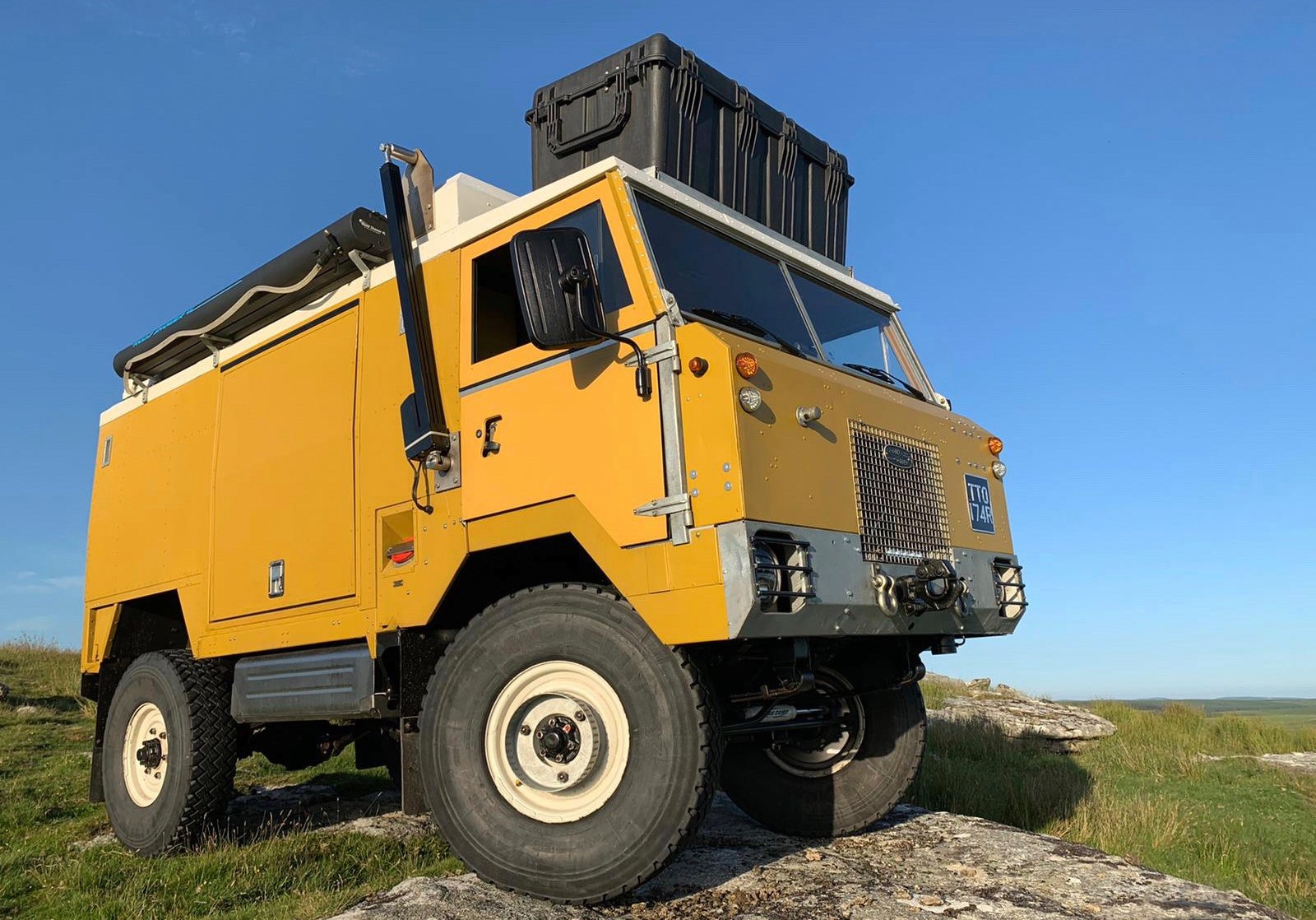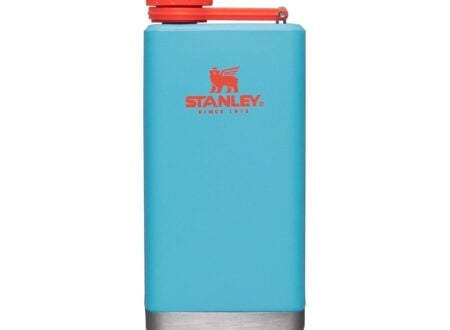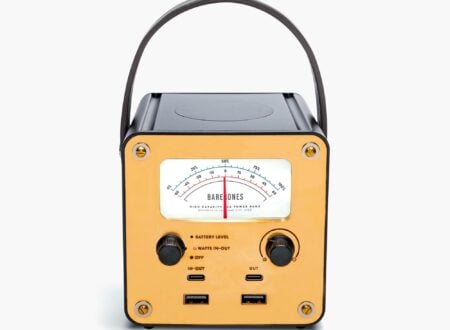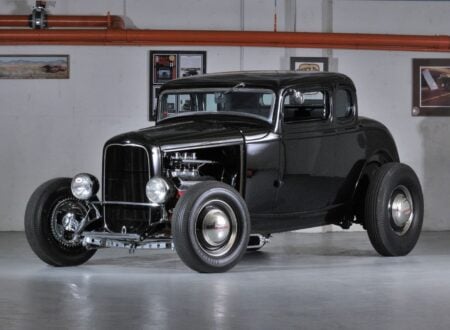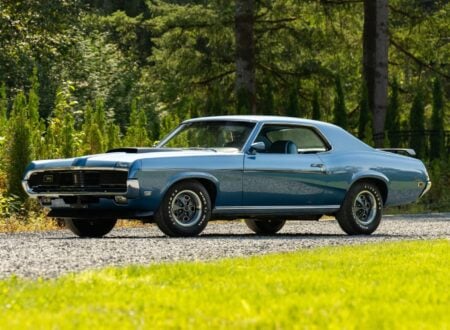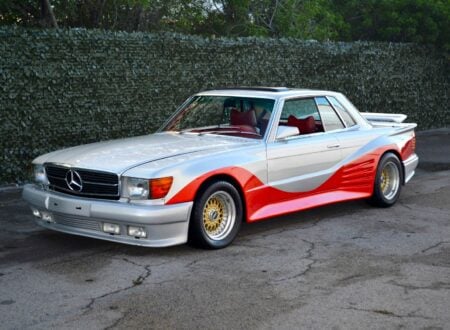The Land Rover 101 Forward Control is an unusual V8-powered four-wheel drive developed by the British automaker in the late 1960s as a gun tractor for the British Ministry of Defence.
No 101 Forward Controls were ever offered by Land Rover to civilians, they were strictly a military-only vehicle when new. In the years since many have been sold into civilian hands as army surplus, and some have been converted into all-terrain campers.
Fast Facts – The Land Rover 101 Forward Control
- The Land Rover 101 Forward Control has been described by some as the “British Unimog” and it’s not hard to see why. Both vehicles have boxy designs with forward cabs, large wheels and tires, and ample payload capacity.
- The 101 Forward Control was developed from lessons learned on the earlier Forward Control IIA and IIB Land Rovers which hadn’t been particularly successful commercially.
- Named for its 101″ wheelbase, the 101 Forward Control had a custom designed chassis fitted with Salisbury axles front and back. Power was provided by the all-alloy Rover V8 and the vehicle had a payload capacity of 1 tonne with a towing capacity of up to 4,000 lbs.
- The 101 FC you see here has been given an overland camper conversion, it has a pop-top roof with a double bed, an onboard battery bank, solar panels, an an onboard water tank, and even an HVAC system.
The Land Rover 101 Forward Control
The Land Rover 101 Forward Control was first announced to the world at the 1972 Commercial Motor Show in England. It was to be the successor to the not particularly successful Forward Control IIA and IIB Land Rovers of the 1960s, and it was intended 100% for military use only.
Above Video: This episode of Tiresbaek TV centers around a barn find 101 Forward Control that they revive and take off-roading, they also take a look back at the history of the model.
Whereas the earlier Forward Control IIA and IIB Land Rovers had suffered from issues including insufficient power the new 101 Forward Control had addressed many of its forebears’ shortcomings.
Power was now provided by a 3.5 liter all-alloy Rover V8, the same engine used in the still-new Ranger Rover and derived from the Buick 215 cubic inch V8 of the early 1960s.
Given its compact dimensions and low weight, this engine provided ample power with very little in the way of a weight penalty, in fact it was actually lighter than some of the all-iron four and six cylinder engines it replaced.
An all-new steel ladder chassis was developed for the 101 Forward Control, and a new body was designed that took cues from the earlier FC designs, possibly with some additional influence from the Unimog.
The front-mounted V8 sent power back through a 4-speed manual transmission into a two-speed transfer case, and from there to the front and rear Salisbury live axles. As was standard for the era the suspension consisted of leaf springs fore and aft with drum brakes on all four wheels.
The 101 FC – Military Use
Land Rover developed the 101 specifically as a gun tractor for the British Ministry of Defense, it was intended to tow the L118 Light Gun (a field gun) and carry its ammunition. It was also designed to be easily air transportable, following on from lessons learned while developing the earlier “Air-Portable” Land Rovers.
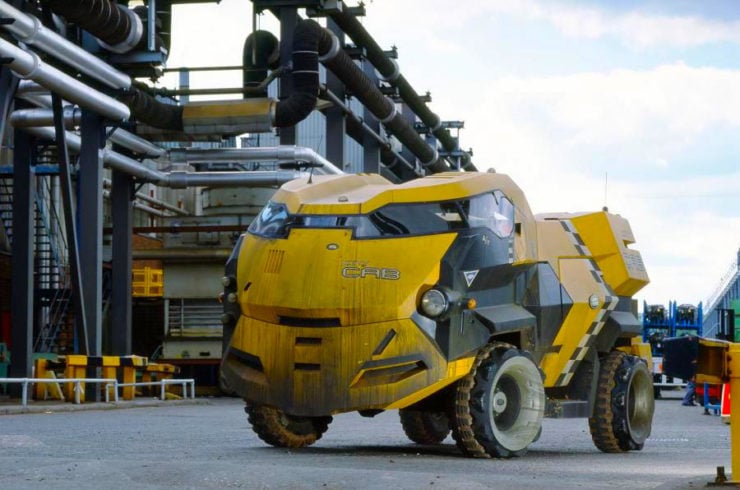

A problem was encountered on early prototypes: drivers had some difficulty getting into the cab due to its height. To resolve this a clever “wheel-step” was developed, it’s essentially a circular steel ring added to the outside of each front wheel, allowing drivers and passengers a conveniently-placed step to help them get up into the passenger compartment.
Although they were originally designed for gun tractor duties later versions of the 101 FC were developed as radio and command vehicles, Tracking Radar Tractor (TRT) vehicles, battlefield ambulances, and perhaps most interestingly as mobile British RAF Rapier missile systems.
Production took place between 1972 and 1978, almost all were sold to the British armed forces however the Australian military also ordered a small number of them. In total there were 2,669 manufactured, far fewer than their Series land Rover siblings, and many of them remain in running condition today.
The Judge Dredd “City CABs”
The most famous 101 Forward Controls were highly-modified “City CABs” used in the 1995 Sylvester Stallone film Judge Dredd. Interestingly these vehicles were actually designed in-house by Land Rover specifically for the film, in such a way that the 101 FC rolling chassis could be used.
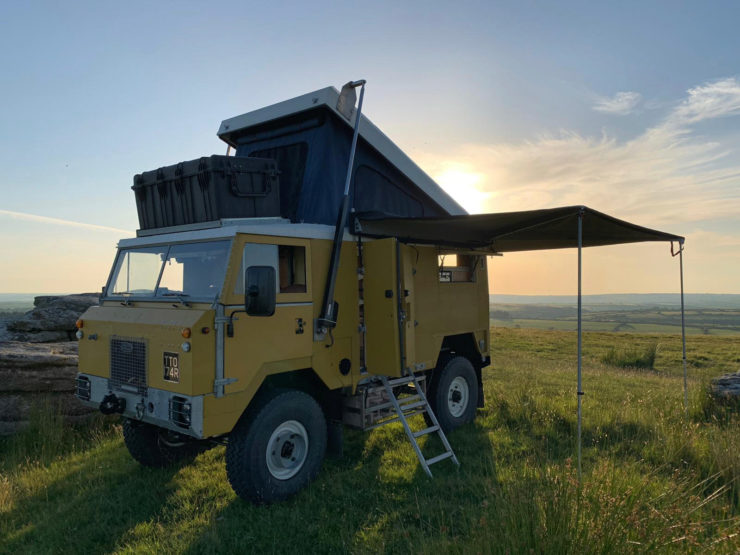

In the years since production ceased the 101 FC was slowly retired from military service, and many were sold into civilian hands as military surplus.
It would be in civilian ownership that the vehicles would experience an entirely new life, often being modified into off-road campers and then used to explore vast swathes of the planet.
The Land Rover 101 FC Overland Camper Shown Here
The 101 FC you see here is from 1977, the penultimate year of production. This vehicle was delivered new to the UK Ministry of Defense and was then later bought by the current owner out of a private collection in Poland.
Significant work has been done to the truck by its current owner, the bulkhead, front bumper, and door hinges have all been galvanized and the front door tops, bottoms, and hardware have all been replaced.
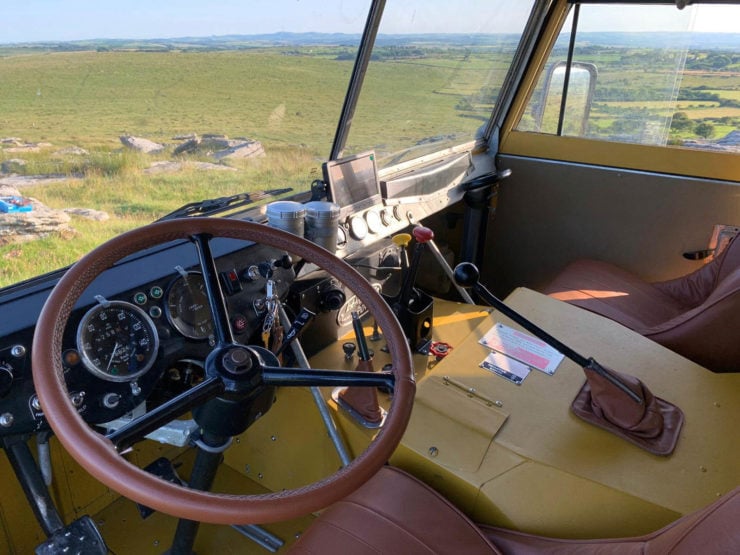

A custom aluminum camper cabin has been fitted with careful attention paid to ensure that it fits in well with the overall design of the 101. It’s then been finished in Dovas White and Bahama Gold with matching off-white 16” steel wheels fitted with 255/100 Michelin XZL tires.
Four-wheel disc brakes were installed by Able Engineering of Leicester, England during the build, and the 101 now rides on height-adjustable air suspension with tuned Bilstein shocks – it also has hydraulic power steering, and a vacuum-operated locking center differential.
In the rear you’ll find a pop-top camper with a double bed, a bank of batteries, a roof-mounted solar panel system consisting of two 100W panels, C-Tek controllers and a battery management system, with a Cotek 3.5kw inverter, and a Sergeant EC160 power supply unit with a split charger.
If you’d like to read more about this unusual 101 FC or place a bid you can visit the listing here on Bring A Trailer. It’s being offered for sale out of Cornwall in England.
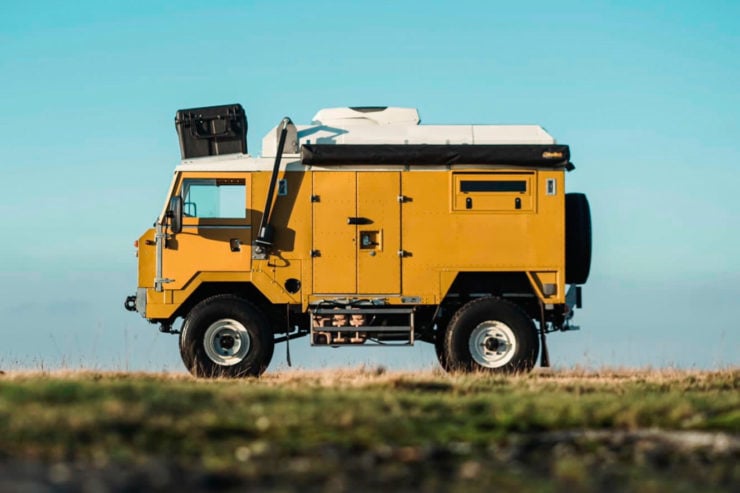
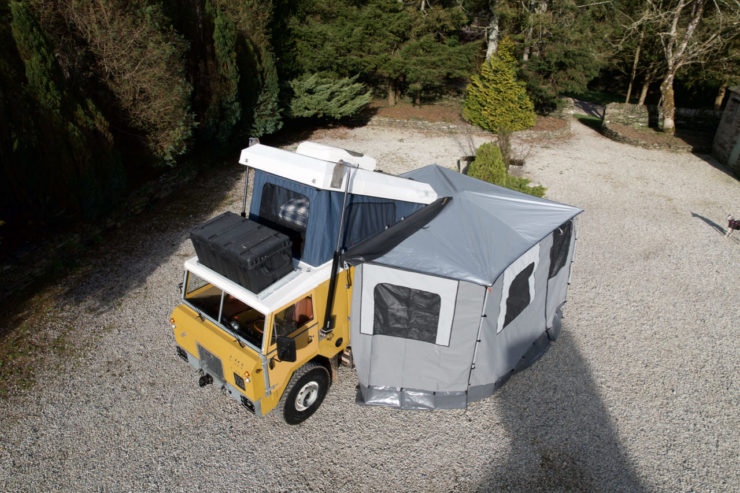
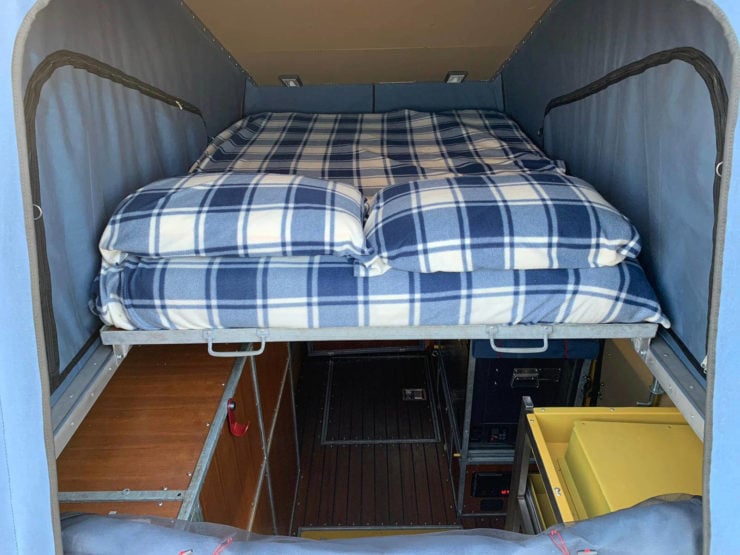

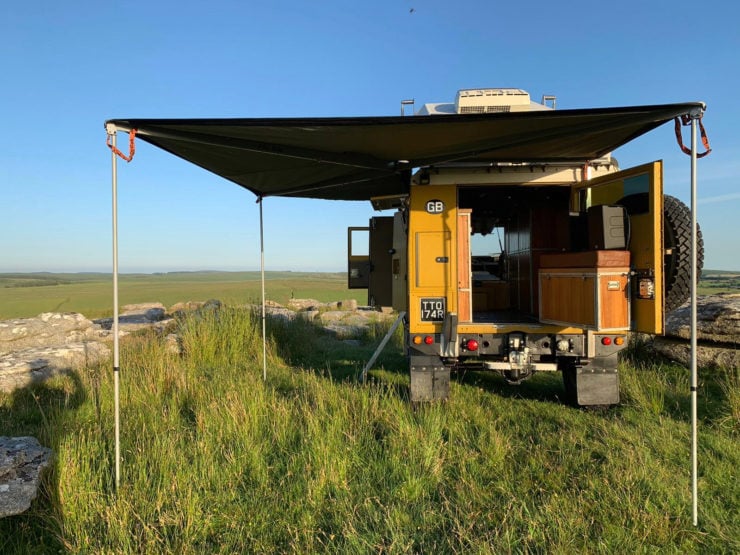
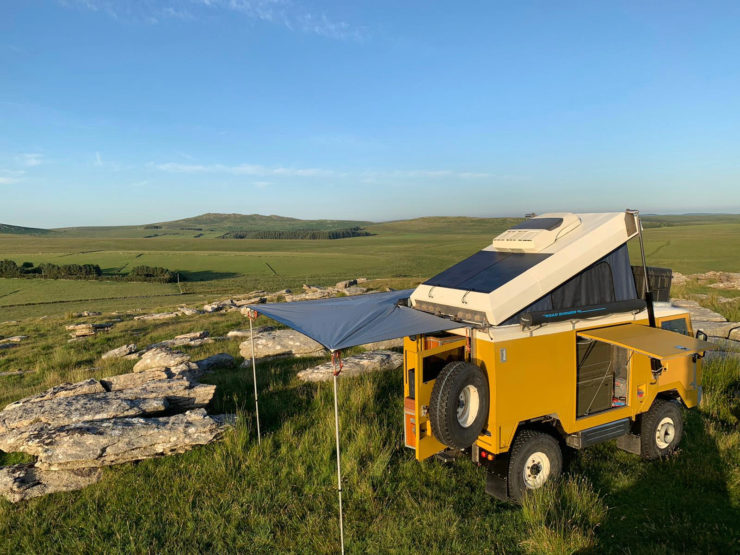
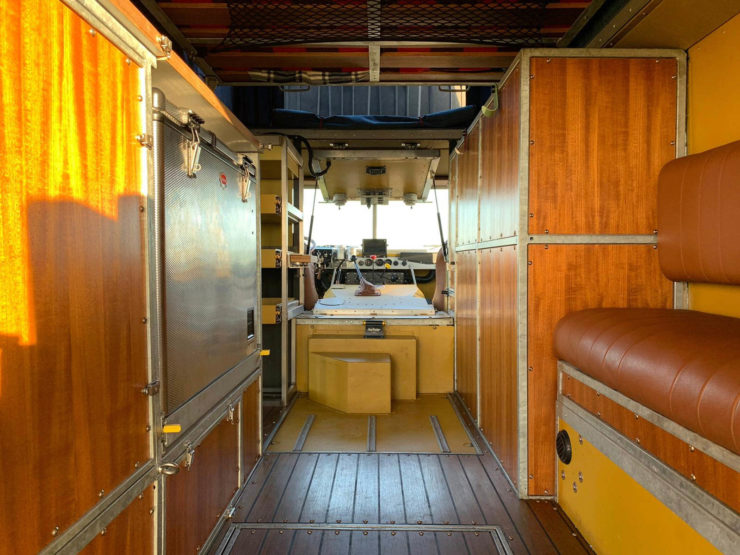
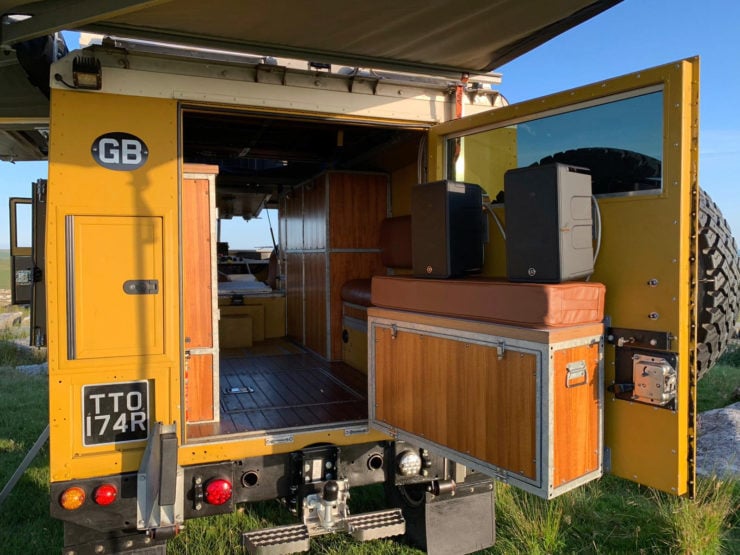
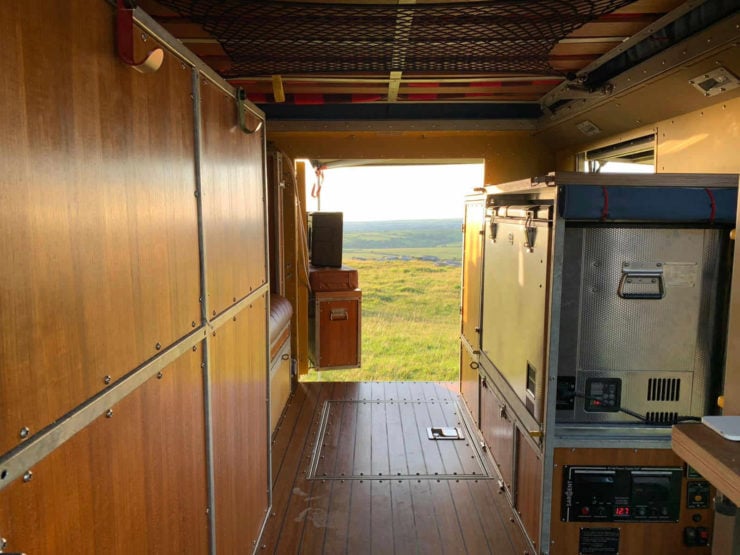
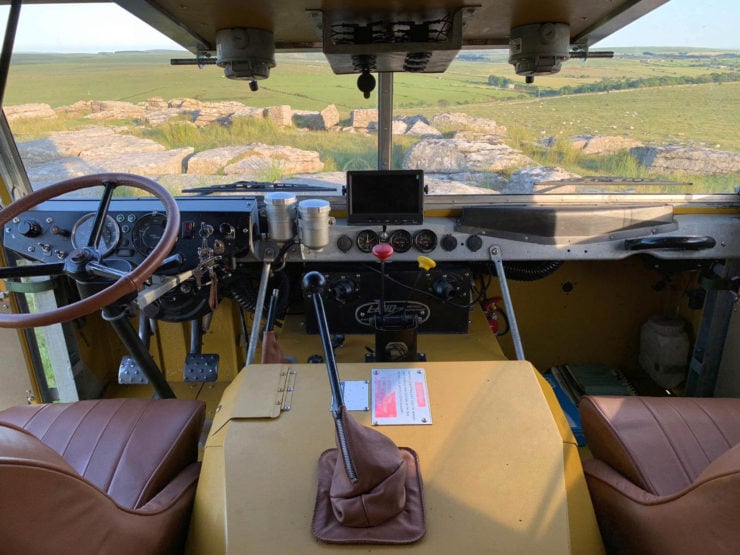
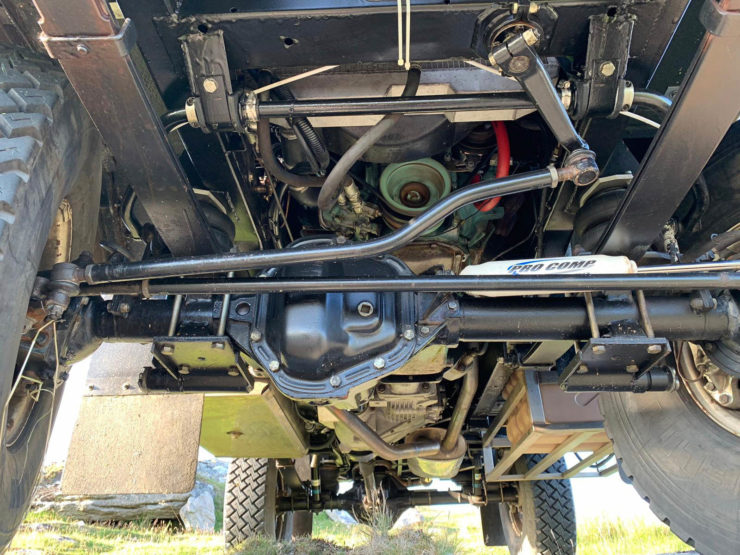
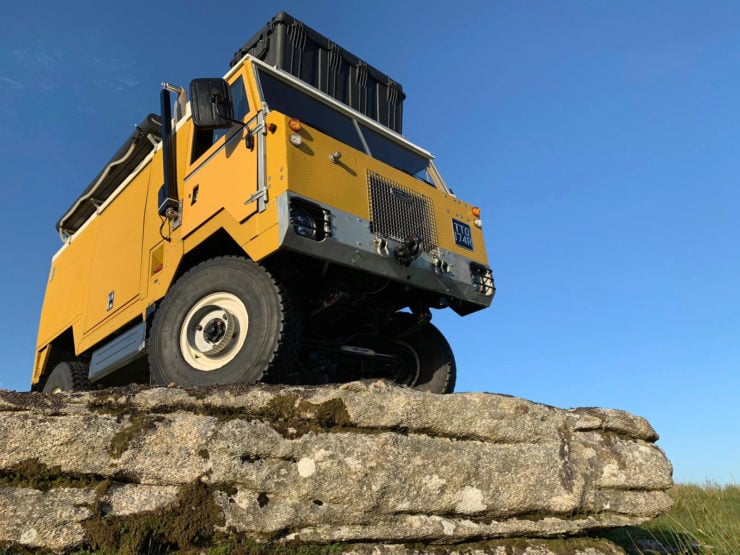
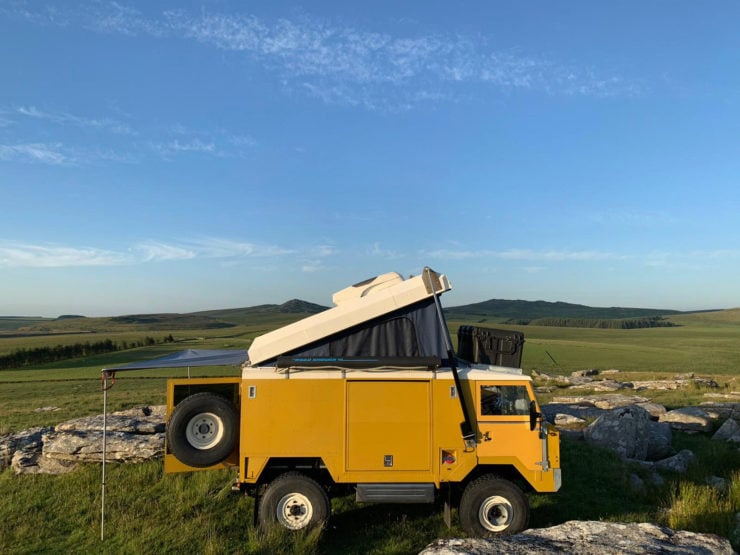
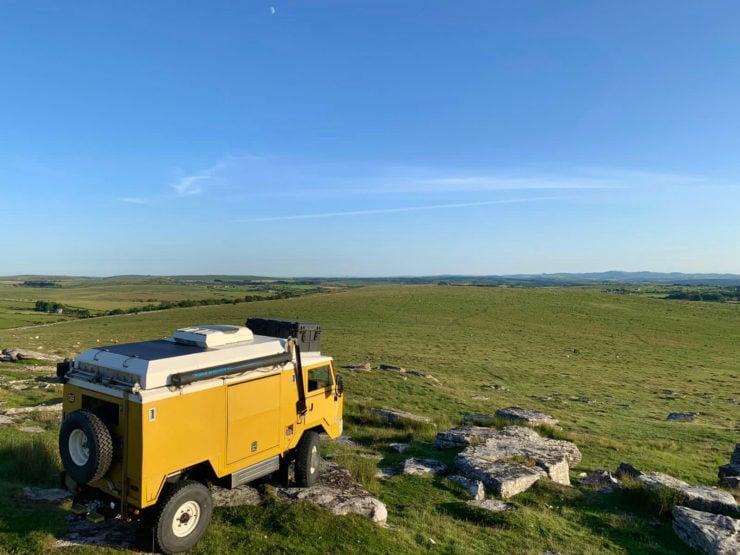
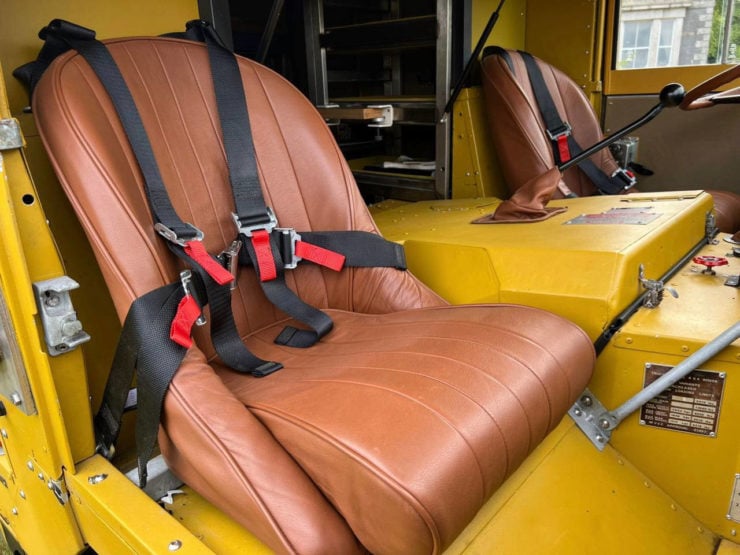
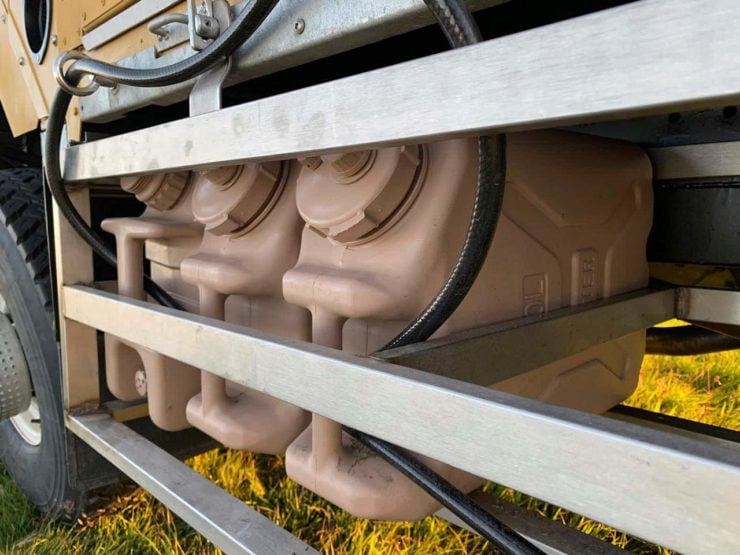

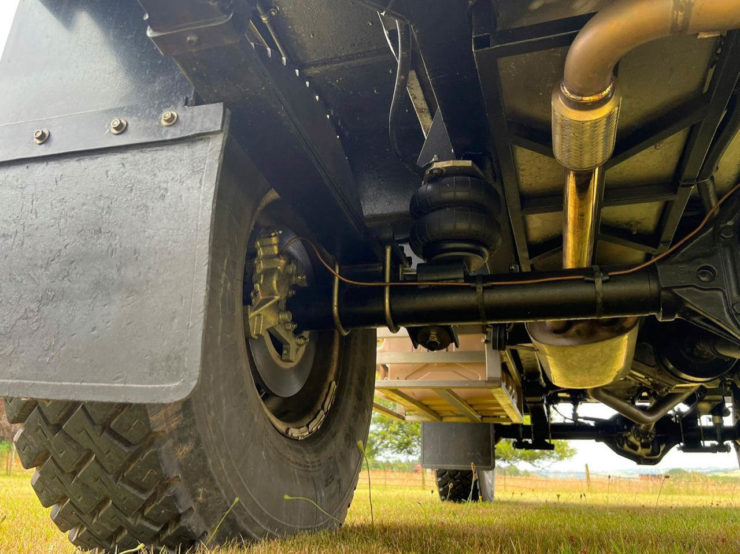
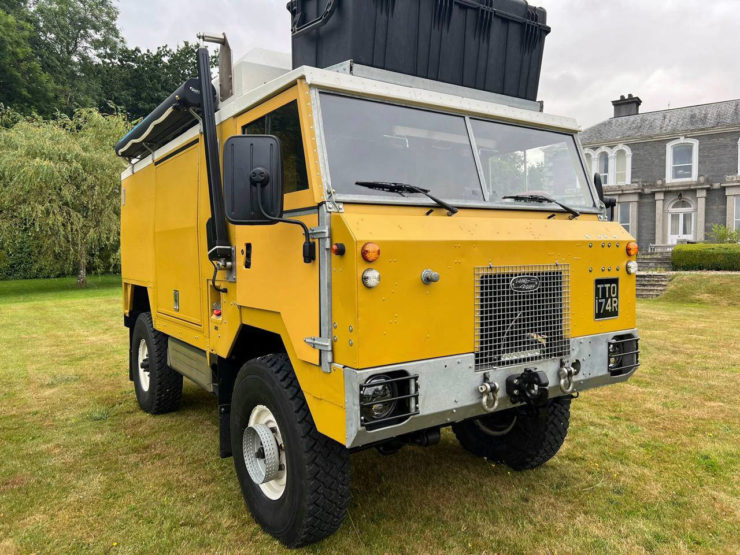
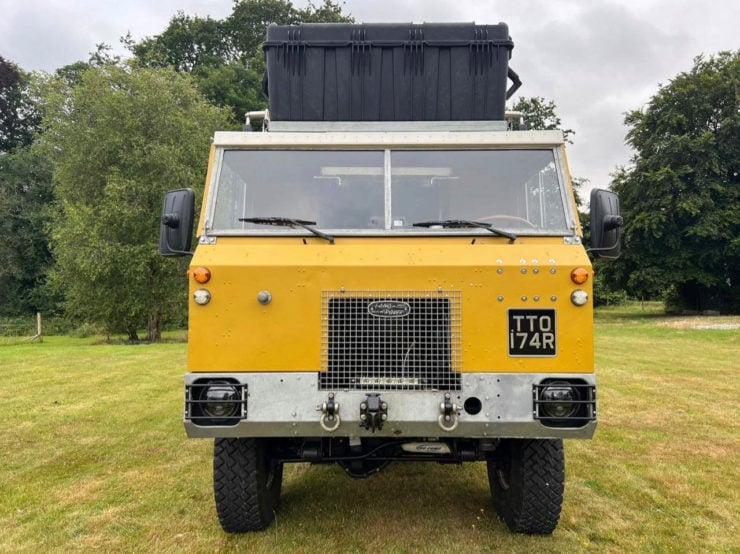
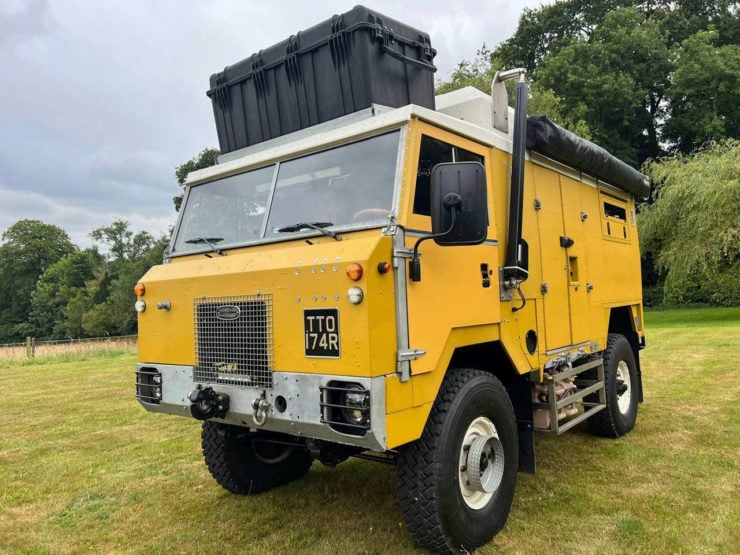

Images courtesy of Bring A Trailer

